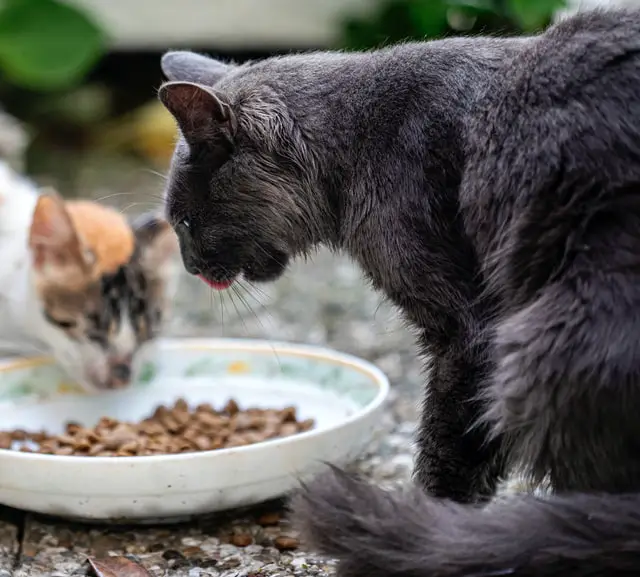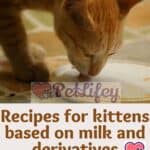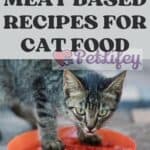
How Much Should a Cat Eat Each Day? Here’s how to calculate the daily amount of cat food based on weight and age.
The cat is an essentially carnivorous animal, which loves to eat several times a day and is able to autonomously establish the amount of food it needs every day: unlike most pets, a cat knows how to control itself and safely leaves the baby food if you feel you have eaten enough.
This is why it is not so difficult to give cats the right amount of food per day, however it is important to be aware of the rations appropriate to their needs and other aspects such as the type of food, the frequency and number of meals per day. depending on some factors such as the weight and age of the cat.
In this article we will address the issue of the daily amount of cat food, building useful tables to take care of our four-legged friend in the best way starting from the diet that best suits his needs.
Daily amount of cat food: tables and useful tips
What foods does the cat need to stay healthy?
We have already mentioned that the cat is a carnivorous animal, even if it must still integrate some nutrients from other types of food to keep itself in perfect health.
In general, the most important component of the cat’s diet are proteins which must represent at least 25% of the calories consumed every day.
Proteins are mainly contained in meat, fish and eggs. To also get fiber and vitamins, it is possible to supplement the cat’s diet with some types of fruit and vegetables suitable for felines.
If, on the other hand, you choose to feed your cat with dry or wet food specifically for animals, it is good practice to carefully read the labels with the nutritional tables to make sure that the food chosen has the right content of all the essential nutrients.
Wet and dry cat food: doses and number of meals
If you choose to feed the cat food normally on the market, you can choose between dry food (kibble) and wet food (cans): the best thing is to mix both types in a balanced way over the weeks, keeping always well aware of the fact that wet food has the advantage of also containing a quantity of water which is essential for the health of the cat.
If, on the other hand, you prefer to prepare food for your cat at home, offering the cat a home diet, we should make sure to choose ingredients and cooking methods suitable for the well-being of our feline friend: obviously it will be necessary to contact the veterinarian who will be able to establish a food plan. ad hoc based on the specific needs of the individual specimen.
With respect to the doses, wet and home food for an adult cat must be calculated with the formula of 40 grams for each kilogram of body weight.
The daily amount of dry food for the adult cat, on the other hand, must be divided by 3 compared to the result obtained from the calculation of the doses of wet food.
The daily ration of cat food can be divided in different ways throughout the day: it can be poured into the bowl and left available, taking care to check that it does not go bad; the bowl can be left full for a certain amount of time several times a day; you can divide the amount of food into three or more meals daily meals. Also pay attention to water: the bowl must always be available and the water fresh and clean.
How much should a puppy eat depending on his age?
So far we have considered the doses and number of daily meals using an adult cat as an example. The daily amount of food, as well as the frequency of the cat’s meals, must take into account not only the body weight factor, but also and above all the cat’s age.
Puppy kitten
The kitten begins the weaning phase at 8 weeks of age. From that moment on, the kitten’s doses and number of meals should be organized according to the following table:
– Up to 4 months> weigh the kitten and calculate the quantity following the instructions on the package and the advice of the veterinarian, dividing the dose into about 5 meals a day: the puppy’s stomach is still small and it is better for it to accept small quantities at a time.
– From 4 to 6 months> to grow properly the kitten will need to increase the amount of food, so add 10 grams of baby food to each meal. Make sure she drinks enough water (or supplement liquids with wet food) and monitor the kitten’s weight regularly.
– From 6 to 8 months> keep the same quantities, dividing them into just 3 meals a day: they will be approximately 40/60 grams each. You can maintain this rate and quantity until the age of one.
Adult cat
Cats are considered adults from the age of one year: from this moment on, the daily amount of cat food will be calculated taking into account various factors including weight, physical activity, the personality of the cat. and also its metabolism.
The starting point is the standard formula for calculating the amount of wet cat food (canned or homemade), which is equal as mentioned to 40 grams per kg of weight. If, on the other hand, we choose to opt for dry food, this dose of wet food must be divided by 3. Example: if the cat weighs 4 kg, the quantity of wet food will be equal to 40gr x 4 that is 160gr. If we want to use dry food, i.e. croquettes, we must divide this result by 3 obtaining 160gr: 3 = about 55gr.
This general dose, as already mentioned, changes according to various factors and characteristics. For example, if your cat has a keen hunting instinct, it is likely that the cat will bring home some prey and eat some of it. On the other hand, if the cat is lazy, it is likely that it will tend to put on weight easily. These aspects must be considered when calculating the daily rations of baby food to put in the bowl.
It is usually a good rule to use the tables printed on the labels of commercial cat food, whether dry or wet: in these tables, the amount of food is essentially calculated based on the weight of the animal.
Be careful to take into account the energy needs of the cat also based on other factors: a neutered cat, for example, needs to eat less than an unsterilized adult and a pregnant cat needs to eat more, while an overweight cat must check the quantities.
The habits and character of the cat, together with its current body weight, are also useful elements for choosing the frequency of meals for the adult cat : if the cat is greedy and tends to eat too quickly it is better to divide the dose into several meals, if, on the other hand, the cat knows how to regulate itself, it is possible to refill the bowl once or twice a day.
Elderly cat
Elderly cats are those who have reached 7/8 years of age: in this phase of their life, our feline friends will no longer be able to assimilate and digest the same quantities of food and especially fats and proteins, therefore the first thing to review it’s the quality of the food.
There are specific senior cat foods on the market, easier to digest, which can be dosed by following the instructions on the package. Also always seek the advice of the veterinarian, especially if the cat has specific health problems.
As the cat gets older, it will also be good to reduce the frequency of its meals: the ideal is to let it eat twice a day, also because it will be less active and calmer, burning a lower amount of energy than in the past.
The metabolism of cats and the quantities of food

The daily amount of food for the cat must be studied, tested and then modified according to the needs and changes observed in the animal. Just as it happens for people, in fact, domestic cats also have their own metabolism that can be more or less slow, affecting the cat’s tendency to gain weight.
If, once the daily dose of food has been calculated, the cat maintains its ideal weight, we can rest assured: it means that the quantity is the right one for him.
We must change something if, on the contrary, the cat will show an increase or a decrease in body weight: always remember that overweight and obesity in cats are a problem that can have very serious consequences on the health of the animal.






